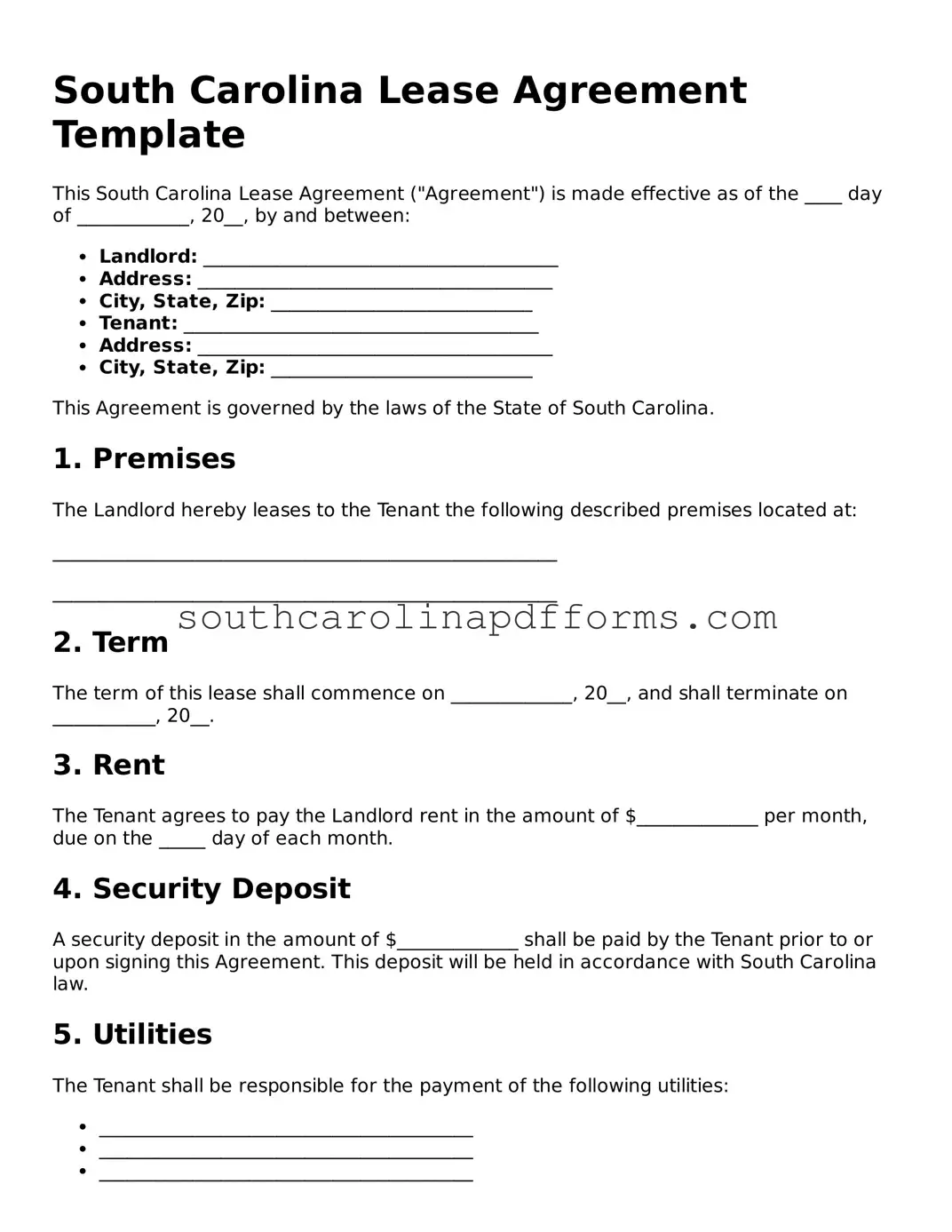Attorney-Approved South Carolina Lease Agreement Document
A South Carolina Lease Agreement form is a legal document that outlines the terms and conditions between a landlord and a tenant for renting a property. This form serves to protect the rights of both parties and ensures that everyone understands their responsibilities. By clearly defining the rental terms, it helps to prevent disputes and promotes a harmonious living arrangement.
Access Lease Agreement Here
